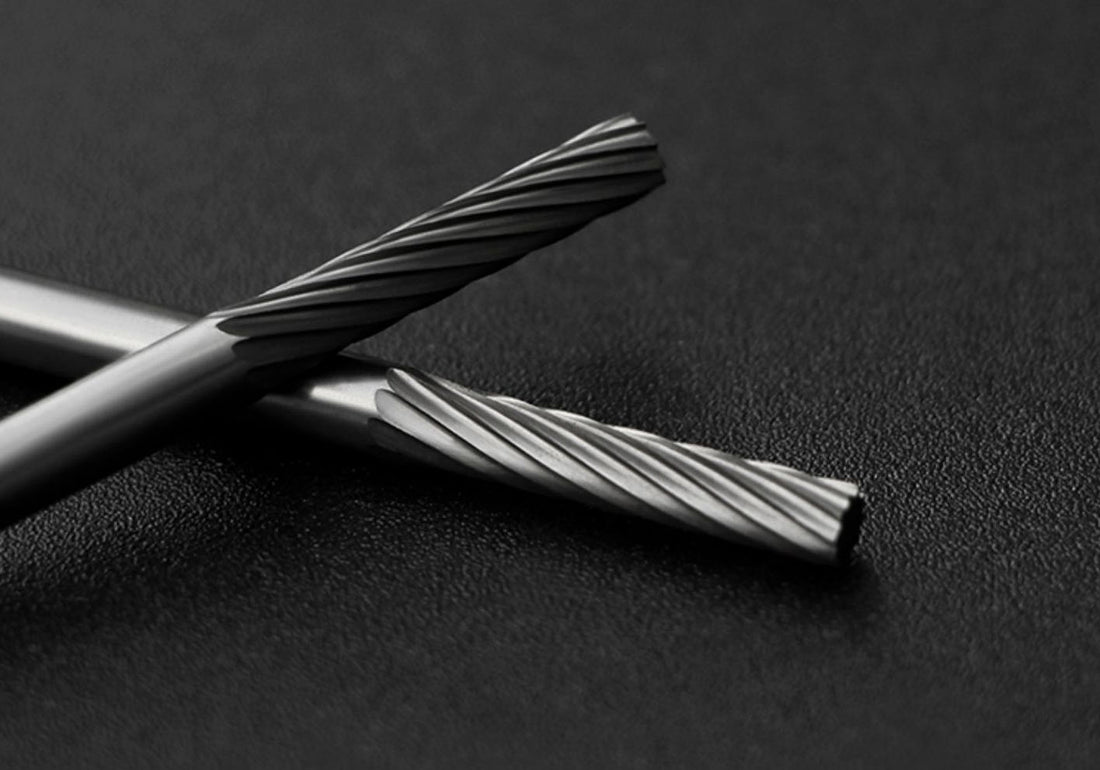
Maximizing Tool Lifespan: Understanding the Durability of Carbide Burrs
Share
Introduction:
One of the most common questions among craftsmen, machinists, and hobbyists alike is, "How long do carbide burrs last?" While there's no one-size-fits-all answer to this question, understanding the factors that influence the lifespan of carbide burrs can help users make informed decisions and maximize the durability of their tools. In this informative blog post, we'll delve into the key factors that affect the longevity of carbide burrs and provide practical tips for extending their lifespan, ensuring optimal performance and value for users.
Exploring Longevity Factors:
1. Material Hardness and Abrasiveness:- The hardness and abrasiveness of the material being machined have a significant impact on the lifespan of carbide burrs.
- Harder and more abrasive materials, such as hardened steel or cast iron, will wear down carbide burrs more quickly compared to softer materials like aluminum or plastic.
- The cutting parameters and techniques employed during machining play a crucial role in determining the longevity of carbide burrs.
- Factors such as cutting speed, feed rate, depth of cut, and coolant usage can affect tool wear and chip formation, impacting the lifespan of carbide burrs.
- The quality of carbide burrs and the level of maintenance they receive also influence their lifespan.
- High-quality carbide burrs manufactured with precision and consistency are likely to last longer than inferior counterparts. Additionally, proper cleaning, sharpening, and storage practices can help prolong the lifespan of carbide burrs.
Practical Tips for Extending Lifespan:
1. Selecting the Right Tool for the Job:- Choose carbide burrs with appropriate geometries, coatings, and tooth configurations for the specific material and application at hand.
- Using the right tool for the job can minimize wear and ensure optimal performance, extending the lifespan of carbide burrs.
- Experiment with cutting parameters to find the optimal balance between material removal rate and tool wear.
- Adjusting cutting speed, feed rate, and depth of cut can help reduce tool wear and prolong the lifespan of carbide burrs.
- Implement proactive maintenance practices such as regular inspection, cleaning, and sharpening of carbide burrs to prevent premature wear and damage.
- Proper storage in a clean, dry environment and periodic inspection for signs of wear or damage can help extend the lifespan of carbide burrs.
Conclusion:
While the lifespan of carbide burrs can vary depending on various factors, including material hardness, cutting parameters, tool quality, and maintenance practices, users can take proactive steps to maximize their durability and performance. By selecting the right tool for the job, optimizing cutting parameters, and implementing proactive maintenance practices, craftsmen, machinists, and hobbyists can ensure that their carbide burrs last longer, providing optimal performance and value over time.




